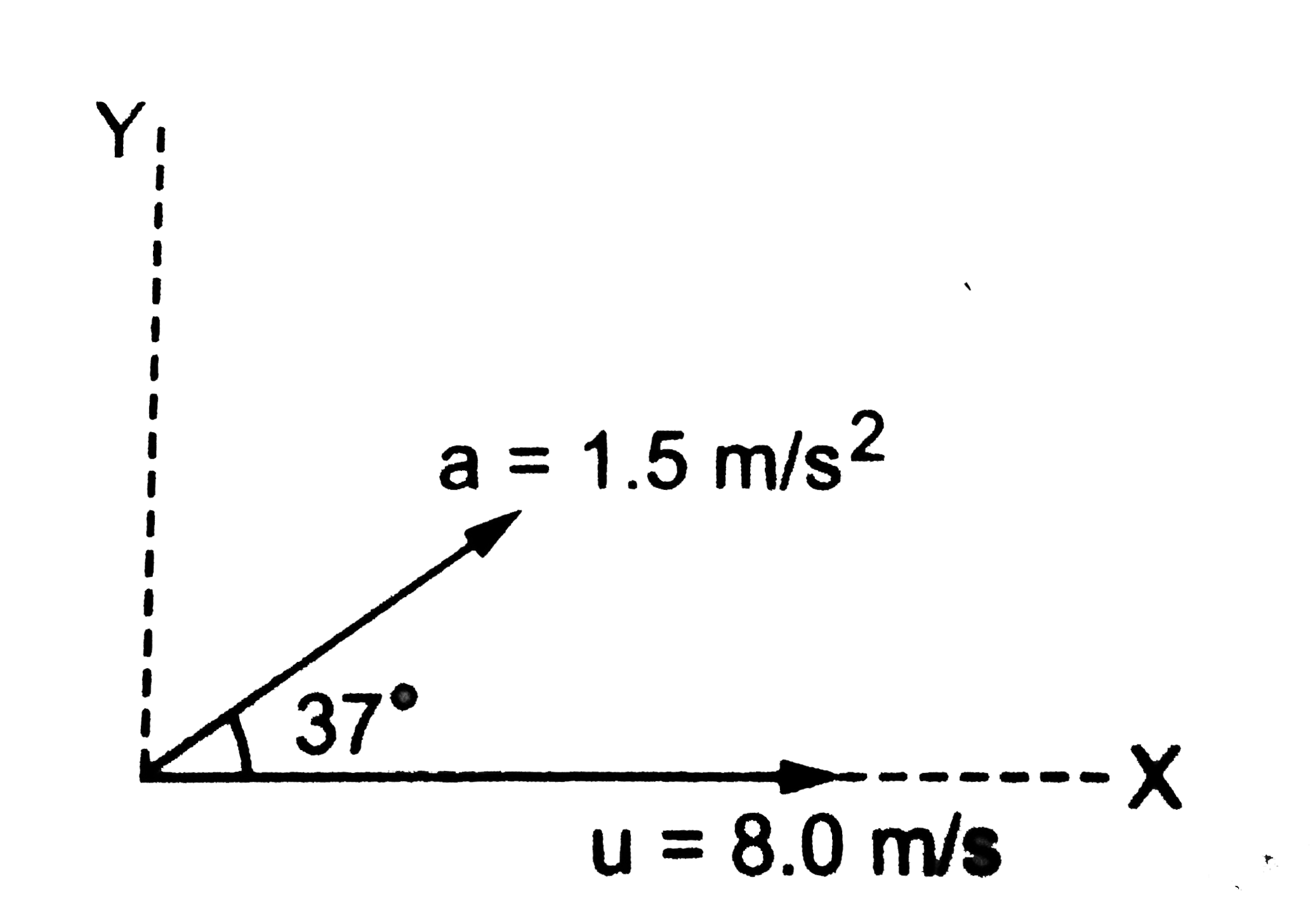A particle moves in the x-y plane with constant acceleration α directed along the negative direction of the y-axis.the equation of the trajectory of the particle is y=ax-bx2, where a and b are constants. Find the velocity of the particle when it passes through the origin.
Step by step video & image solution for A particle moves in the x-y plane with constant acceleration alpha directed along the negative direction of the y-axis.the equation of the trajectory of the particle is y=ax-bx^2, where a and b are constants. Find the velocity of the particle when it passes through the origin. by Physics experts to help you in doubts & scoring excellent marks in Class 11 exams.
Updated on:21/07/2023Topper's Solved these Questions
Similar Questions
A particle moves in the plane xy with constant acceleration 'a' directed along the negative y-axis. The equation of motion of the particle has the form y=px−qx2 where p and q are positive constants. Find the velocity of the particle at the origin of co-ordinates.
View SolutionA particle moves in the plane xy with constant acceleration 'a' directed along the negative y-axis. The equation of motion of the particle has the form y=px−qx2 where p and q are positive constants. Find the velocity of the particle at the origin of co-ordinates.
View Solution
Knowledge Check
A particle moves in the xy plane with a constant acceleration 'g' in the negative-direction. Its equqaiton of motion is y=ax−bx2, where a and b are constants. Which of the following are correct?
AThe x-compound of its velocity is constant.BAt the origin, the y-compound of its velocity is a √g2b.CAt the origin, its velocity makes an angle tan−1 (a) with yeh x-axis.DThe particle moves exactly like a projectile.A particle moves in a plane with constant acceleration in a direction different from the initial velocity. The path of the particle will be
AA straight will beBAn arc of a circleCA parabolaDAn ellipseA particle moves in the XY-plane according to the law x=kt,y=kt(1−αt), where k and α are positive constants and t is time. The trajectory of the particle is
Ay=kxBy=x−αx2kCy=−ax2kDy=αx
A particle moves in the xy plane with a constant acceleration ω directed along the negative y-axis. The equation of motion of particle has the form y=cx−dx2, where c and d are positive constants. Find the velocity of the particle at the origin of coordinates.
View SolutionA particle moves in the plane xy with constant acceleration a directed along the negative y-axis. The equaiton of motion of the particle has the form y=px−qx2 where p and q are positive constants. Find the velocity of the particle at the origin of corrdinates.
View SolutionA particle moves in the plane x y with constant acceleration a directed along the negative y-axis. The equation of motion of the particle has the form y=k1x−k2x2, where k1 and k2 are positive constants. Find the velocity of the particle at the origin of coordinates.
View SolutionA particle movesin the X-Y plane with a constasnt acceleration of 1.5ms2 in the direction making an angle of 370 with the X-axis.At t=0 the particle is at the orign and its velocity is 8.0 m/s along the X-axis. Find the velocity and the position of the particle at t=4.0 s.

View SolutionA particle of mass m is moving along the line y-b with constant acceleration a. The areal velocity of the position vector of the particle at time t is (u=0)
View Solution

